Презентация generat organs
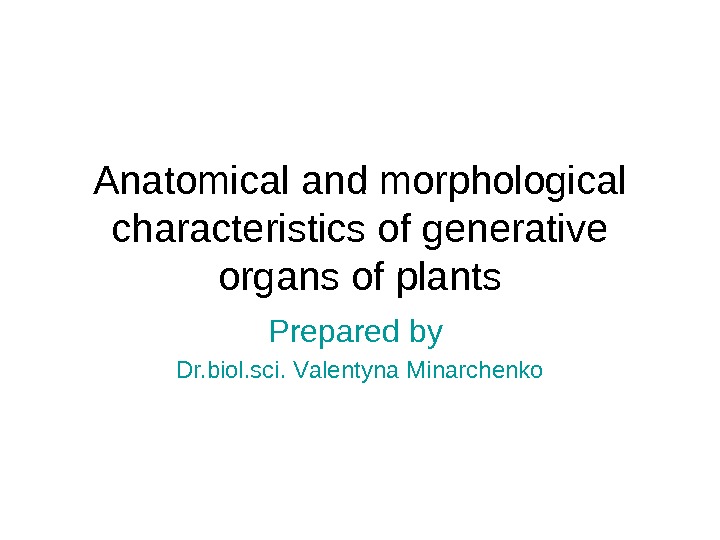
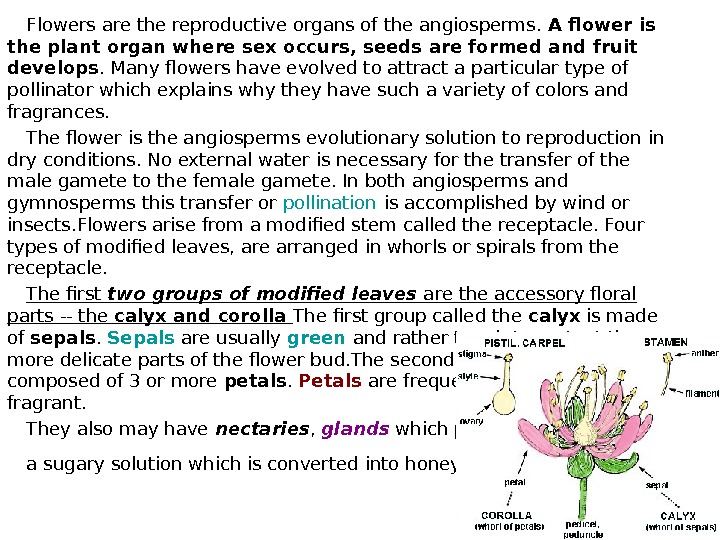
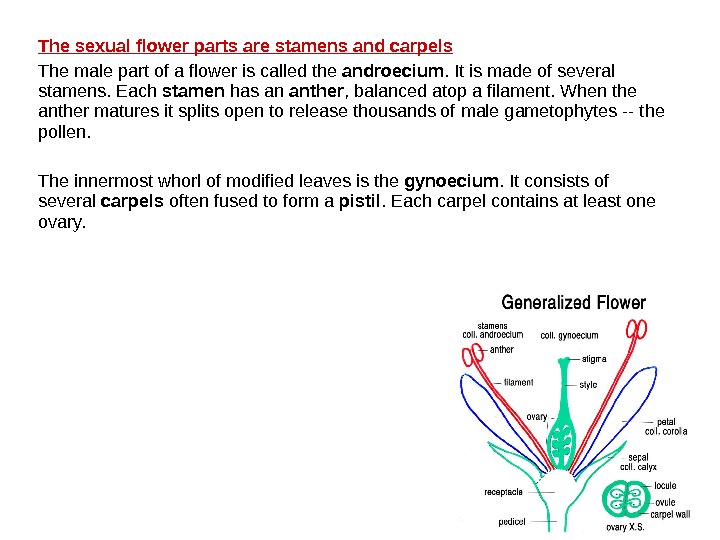
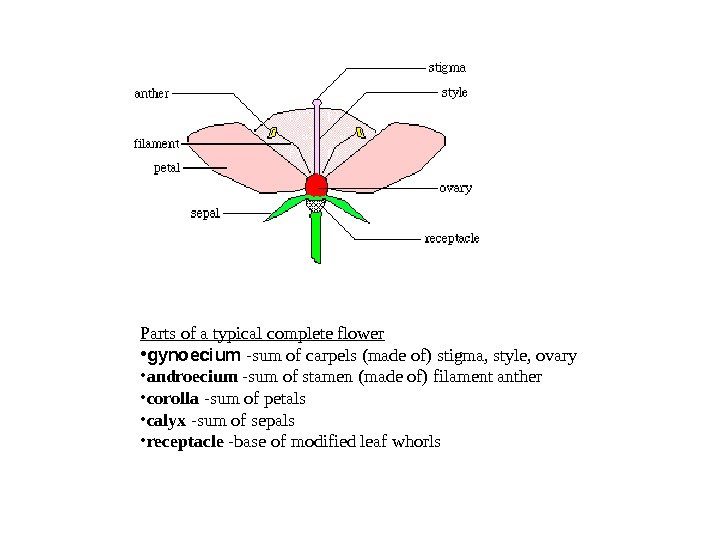
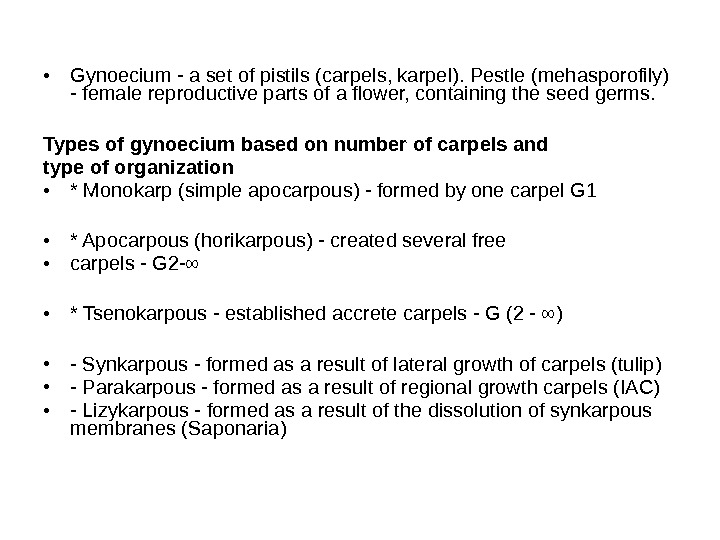
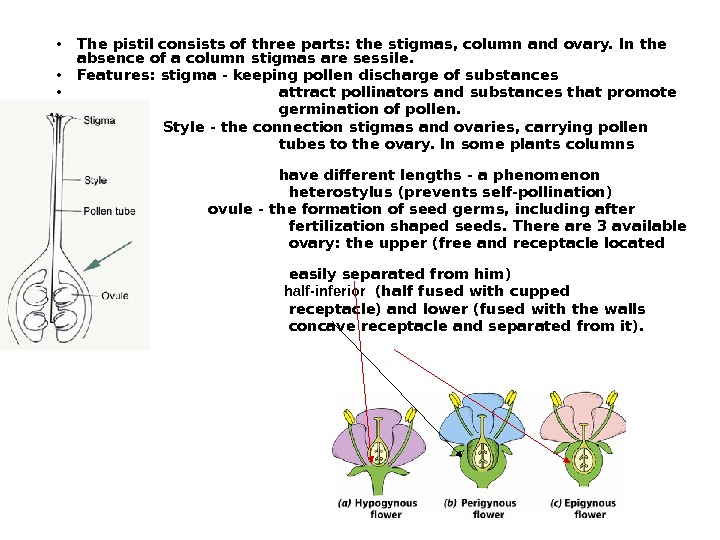
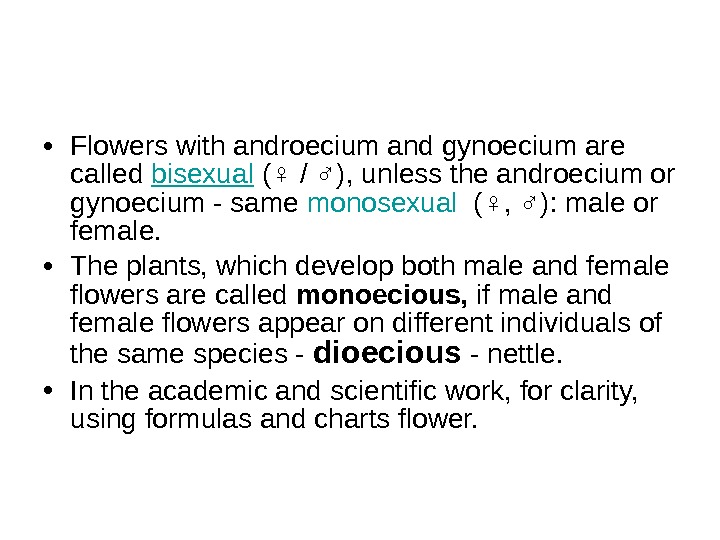

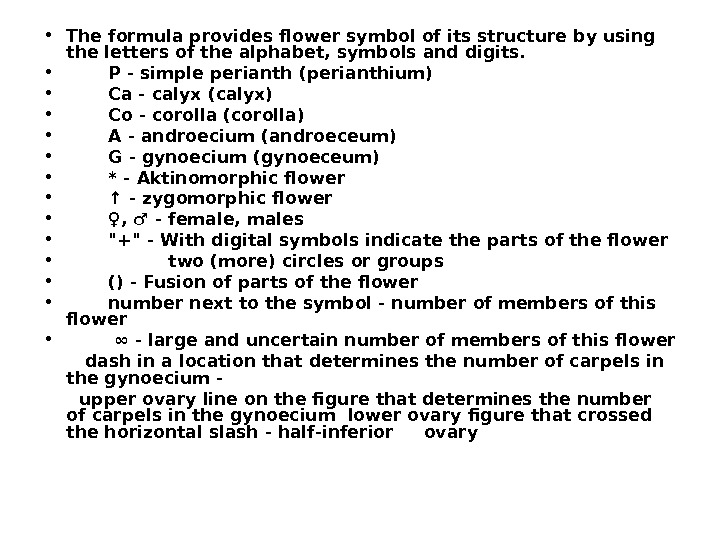
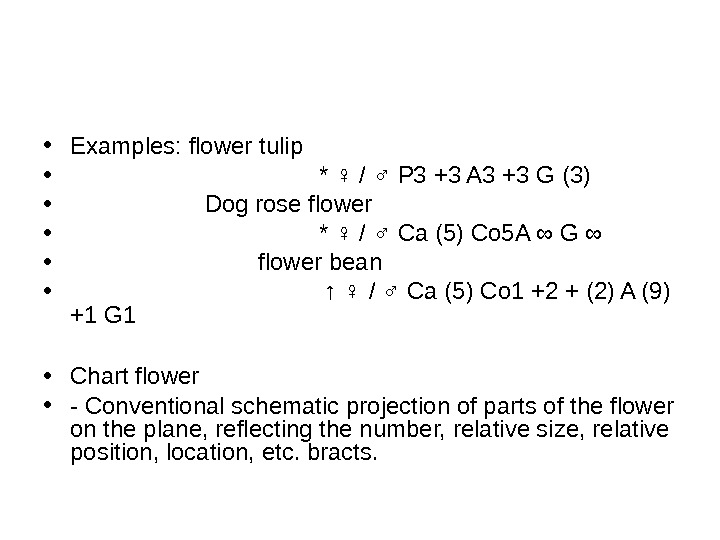
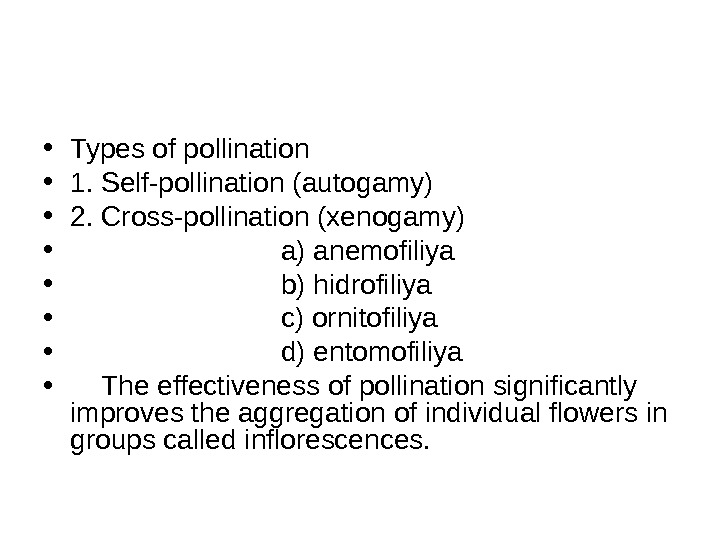
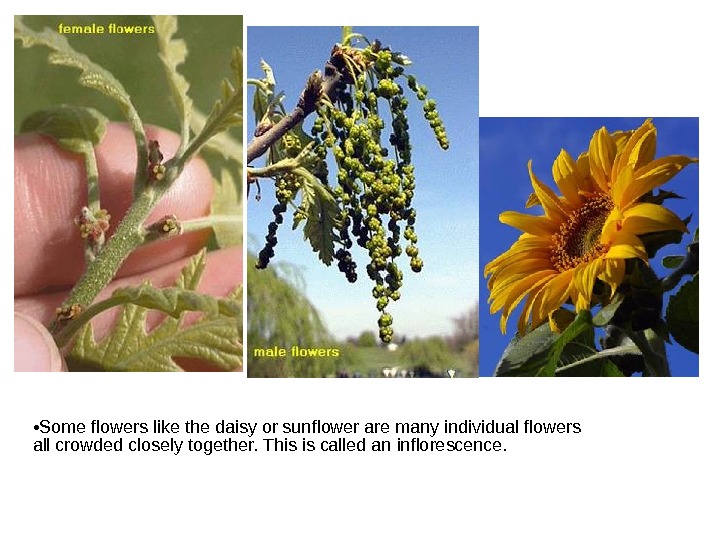

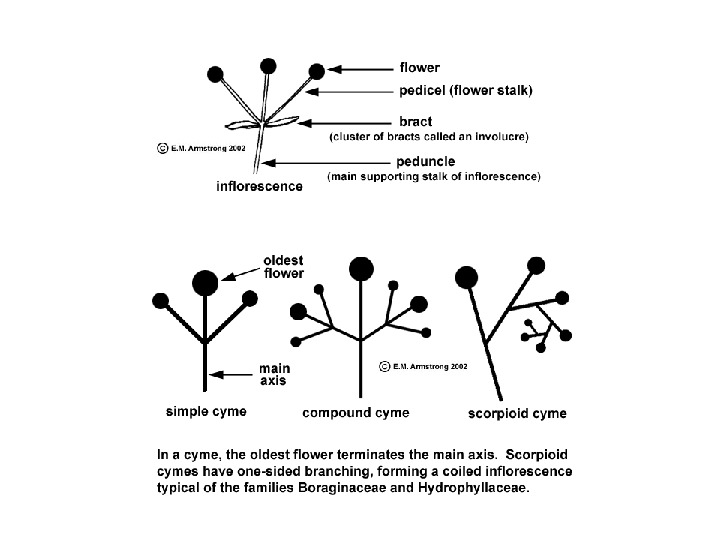
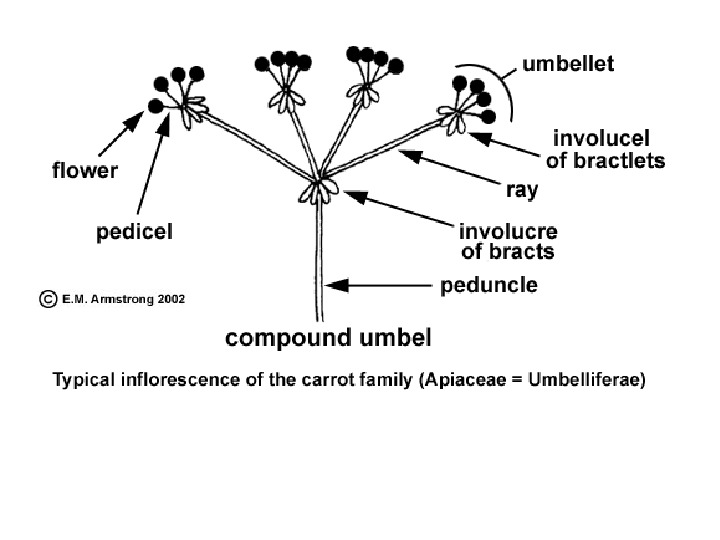
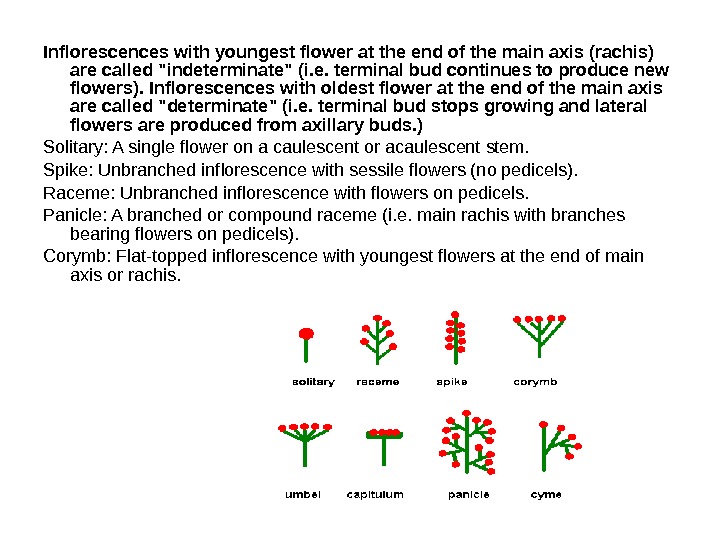
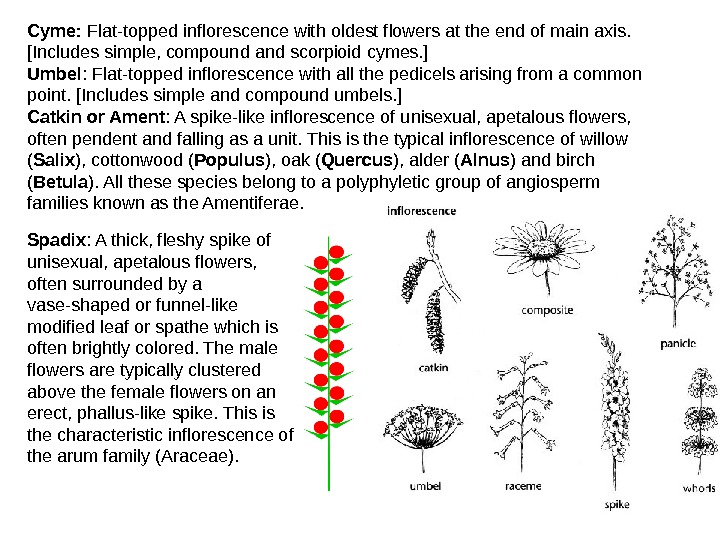
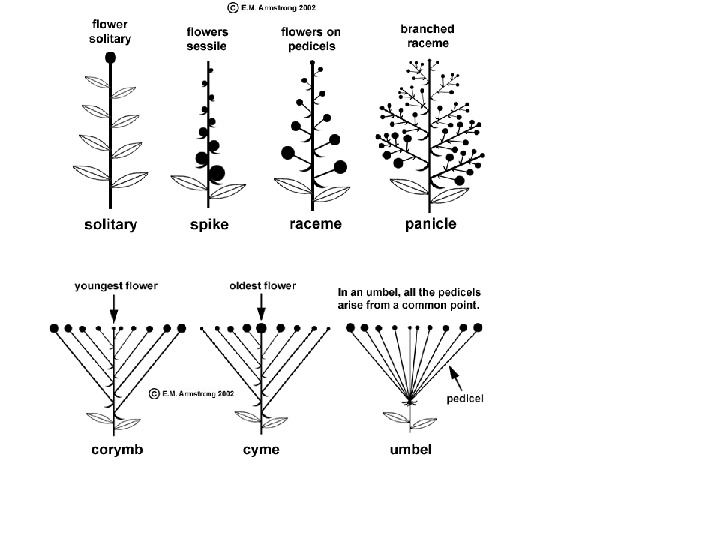

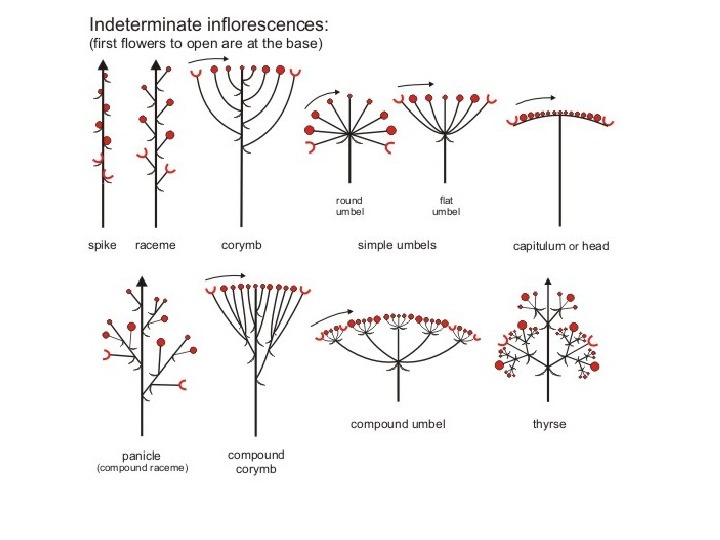
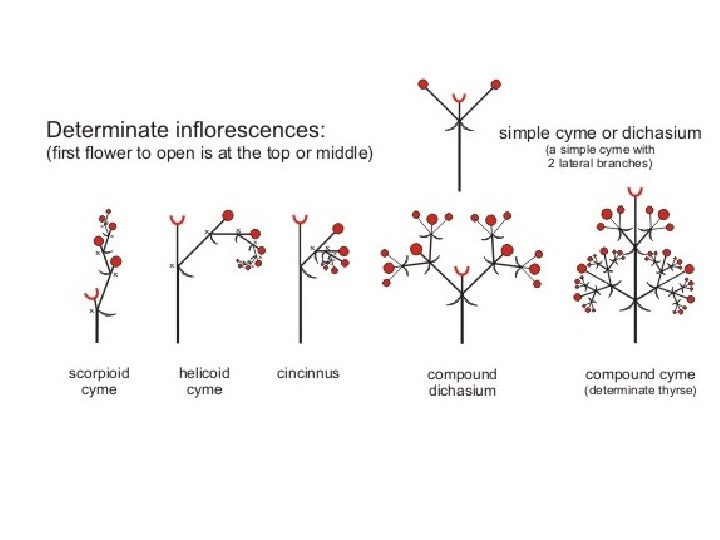
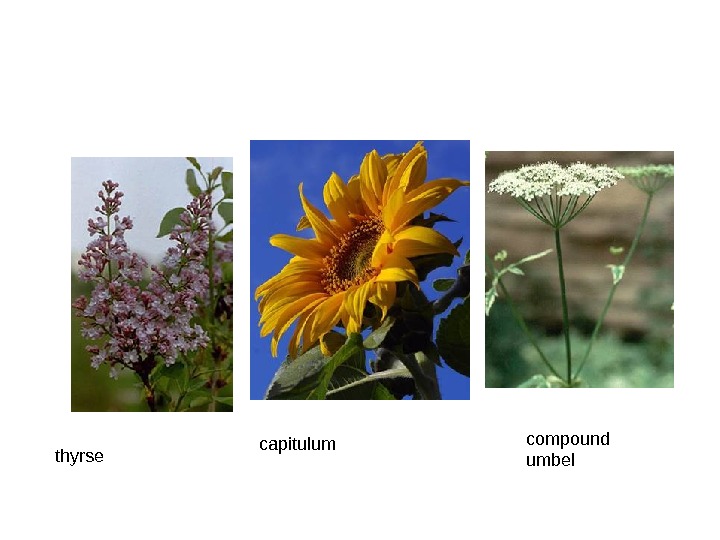
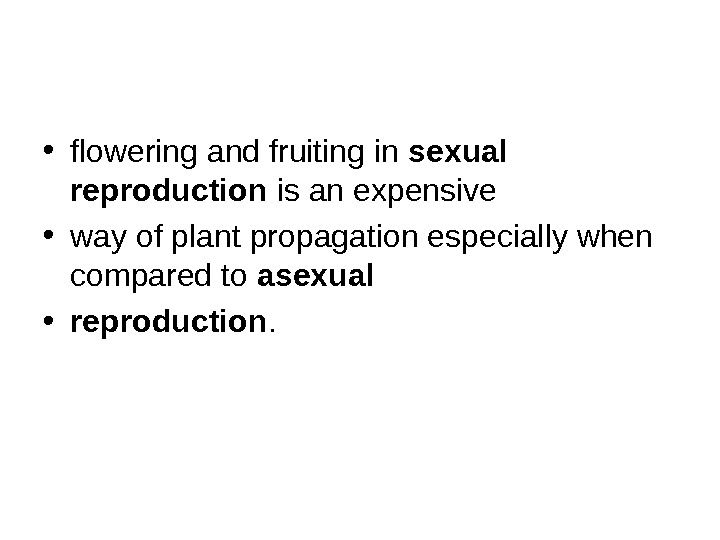
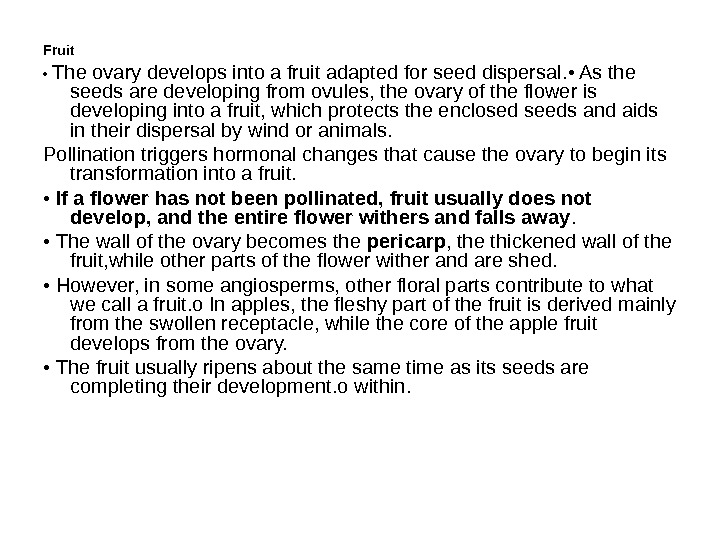
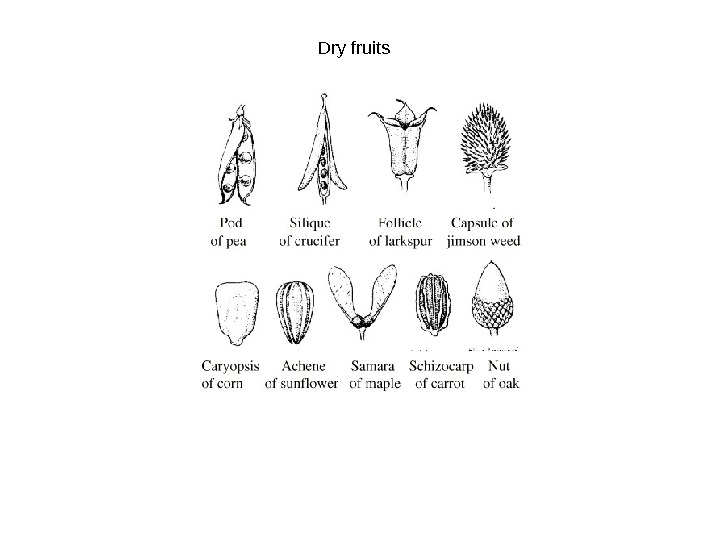

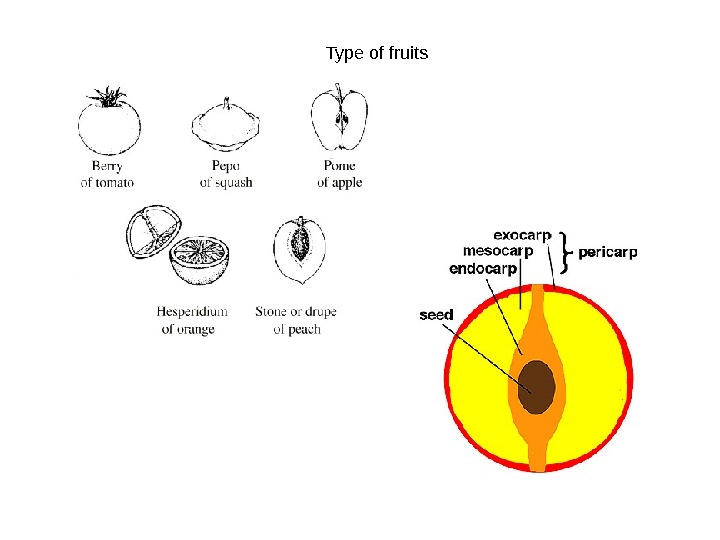
- Размер: 1.3 Mегабайта
- Количество слайдов: 27
Описание презентации Презентация generat organs по слайдам
 Anatomical and morphological characteristics of generative organs of plants Prepared by Dr. biol. sci. V alent y n a Minarchenko
Anatomical and morphological characteristics of generative organs of plants Prepared by Dr. biol. sci. V alent y n a Minarchenko
 Flowers are the reproductive organs of the angiosperms. A flower is the plant organ where sex occurs, seeds are formed and fruit develops. Many flowers have evolved to attract a particular type of pollinator which explains why they have such a variety of colors and fragrances. The flower is the angiosperms evolutionary solution to reproduction in dry conditions. No external water is necessary for the transfer of the male gamete to the female gamete. In both angiosperms and gymnosperms this transfer or pollination is accomplished by wind or insects. Flowers arise from a modified stem called the receptacle. Four types of modified leaves, are arranged in whorls or spirals from the receptacle. The first two groups of modified leaves are the accessory floral parts — the calyx and corolla The first group called the calyx is made of sepals. Sepals are usually green and rather tough to protect the more delicate parts of the flower bud. The second whorl is the corolla , composed of 3 or more petals. Petals are frequently colorful and fragrant. They also may have nectaries , glands which produce a sugary solution which is converted into honey by bees.
Flowers are the reproductive organs of the angiosperms. A flower is the plant organ where sex occurs, seeds are formed and fruit develops. Many flowers have evolved to attract a particular type of pollinator which explains why they have such a variety of colors and fragrances. The flower is the angiosperms evolutionary solution to reproduction in dry conditions. No external water is necessary for the transfer of the male gamete to the female gamete. In both angiosperms and gymnosperms this transfer or pollination is accomplished by wind or insects. Flowers arise from a modified stem called the receptacle. Four types of modified leaves, are arranged in whorls or spirals from the receptacle. The first two groups of modified leaves are the accessory floral parts — the calyx and corolla The first group called the calyx is made of sepals. Sepals are usually green and rather tough to protect the more delicate parts of the flower bud. The second whorl is the corolla , composed of 3 or more petals. Petals are frequently colorful and fragrant. They also may have nectaries , glands which produce a sugary solution which is converted into honey by bees.
 The sexual flower parts are stamens and carpels The male part of a flower is called the androecium. It is made of several stamens. Each stamen has an anther , balanced atop a filament. When the anther matures it splits open to release thousands of male gametophytes — the pollen. The innermost whorl of modified leaves is the gynoecium. It consists of several carpels often fused to form a pistil. Each carpel contains at least one ovary.
The sexual flower parts are stamens and carpels The male part of a flower is called the androecium. It is made of several stamens. Each stamen has an anther , balanced atop a filament. When the anther matures it splits open to release thousands of male gametophytes — the pollen. The innermost whorl of modified leaves is the gynoecium. It consists of several carpels often fused to form a pistil. Each carpel contains at least one ovary.
 Parts of a typical complete flower • gynoecium -sum of carpels (made of) stigma, style, ovary • androecium -sum of stamen (made of) filament anther • corolla -sum of petals • calyx -sum of sepals • receptacle -base of modified leaf whorls
Parts of a typical complete flower • gynoecium -sum of carpels (made of) stigma, style, ovary • androecium -sum of stamen (made of) filament anther • corolla -sum of petals • calyx -sum of sepals • receptacle -base of modified leaf whorls
 • Gynoecium — a set of pistils (carpels, karpel). Pestle (mehasporofily) — female reproductive parts of a flower, containing the seed germs. Types of gynoecium based on number of carpels and type of organization • * Monokarp (simple apocarpous) — formed by one carpel G 1 • * Apocarpous (horikarpous) — created several free • carpels — G 2 -∞ • * Tsenokarpous — established accrete carpels — G (2 — ∞) • — Synkarpous — formed as a result of lateral growth of carpels (tulip) • — Parakarpous — formed as a result of regional growth carpels (IAC) • — Lizykarpous — formed as a result of the dissolution of synkarpous membranes ( Saponaria )
• Gynoecium — a set of pistils (carpels, karpel). Pestle (mehasporofily) — female reproductive parts of a flower, containing the seed germs. Types of gynoecium based on number of carpels and type of organization • * Monokarp (simple apocarpous) — formed by one carpel G 1 • * Apocarpous (horikarpous) — created several free • carpels — G 2 -∞ • * Tsenokarpous — established accrete carpels — G (2 — ∞) • — Synkarpous — formed as a result of lateral growth of carpels (tulip) • — Parakarpous — formed as a result of regional growth carpels (IAC) • — Lizykarpous — formed as a result of the dissolution of synkarpous membranes ( Saponaria )
 • The pistil consists of three parts: the stigmas, column and ovary. In the absence of a column stigmas are sessile. • Features: stigma — keeping pollen discharge of substances • attract pollinators and substances that promote • germination of pollen. • Style — the connection stigmas and ovaries, carrying pollen • tubes to the ovary. In some plants columns pistils • have different lengths — a phenomenon • heterostylus (prevents self-pollination) • ovule — the formation of seed germs, including after • fertilization shaped seeds. There are 3 available • ovary: the upper (free and receptacle located on the • easily separated from him) • half-inferior (half fused with cupped • receptacle) and lower (fused with the walls • concave receptacle and separated from it).
• The pistil consists of three parts: the stigmas, column and ovary. In the absence of a column stigmas are sessile. • Features: stigma — keeping pollen discharge of substances • attract pollinators and substances that promote • germination of pollen. • Style — the connection stigmas and ovaries, carrying pollen • tubes to the ovary. In some plants columns pistils • have different lengths — a phenomenon • heterostylus (prevents self-pollination) • ovule — the formation of seed germs, including after • fertilization shaped seeds. There are 3 available • ovary: the upper (free and receptacle located on the • easily separated from him) • half-inferior (half fused with cupped • receptacle) and lower (fused with the walls • concave receptacle and separated from it).
 • Flowers with androecium and gynoecium are called bisexual (♀ / ♂), unless the androecium or gynoecium — same monosexual (♀, ♂): male or female. • The plants, which develop both male and female flowers are called monoecious, if male and female flowers appear on different individuals of the same species — dioecious — nettle. • In the academic and scientific work, for clarity, using formulas and charts flower.
• Flowers with androecium and gynoecium are called bisexual (♀ / ♂), unless the androecium or gynoecium — same monosexual (♀, ♂): male or female. • The plants, which develop both male and female flowers are called monoecious, if male and female flowers appear on different individuals of the same species — dioecious — nettle. • In the academic and scientific work, for clarity, using formulas and charts flower.
 • Flowers may have radial symmetry (considered a primitive trait) or they can have bilateral symmetry. The bilateral symmetry —as found in orchids— is designed to fit a specific pollinator (bee or wasp) like a key to a lock preventing the plant from self pollinating.
• Flowers may have radial symmetry (considered a primitive trait) or they can have bilateral symmetry. The bilateral symmetry —as found in orchids— is designed to fit a specific pollinator (bee or wasp) like a key to a lock preventing the plant from self pollinating.
 • The formula provides flower symbol of its structure by using the letters of the alphabet, symbols and digits. • P — simple perianth (perianthium) • Ca — calyx (calyx) • Co — corolla (corolla) • A — androecium (androeceum) • G — gynoecium (gynoeceum) • * — Aktinomorphic flower • ↑ — zygomorphic flower • ♀ , ♂ — female, males • «+» — With digital symbols indicate the parts of the flower • two (more) circles or groups • () — Fusion of parts of the flower • number next to the symbol — number of members of this flower • ∞ — large and uncertain number of members of this flower dash in a location that determines the number of carpels in the gynoecium — upper ovaryline on the figure that determines the number of carpels in the gynoecium lower ovaryfigure that crossed the horizontal slash — half-inferior ovary
• The formula provides flower symbol of its structure by using the letters of the alphabet, symbols and digits. • P — simple perianth (perianthium) • Ca — calyx (calyx) • Co — corolla (corolla) • A — androecium (androeceum) • G — gynoecium (gynoeceum) • * — Aktinomorphic flower • ↑ — zygomorphic flower • ♀ , ♂ — female, males • «+» — With digital symbols indicate the parts of the flower • two (more) circles or groups • () — Fusion of parts of the flower • number next to the symbol — number of members of this flower • ∞ — large and uncertain number of members of this flower dash in a location that determines the number of carpels in the gynoecium — upper ovaryline on the figure that determines the number of carpels in the gynoecium lower ovaryfigure that crossed the horizontal slash — half-inferior ovary
 • Examples: flower tulip • * ♀ / ♂ P 3 +3 A 3 +3 G (3) • Dog rose flower • * ♀ / ♂ Ca (5) Co 5 A ∞ G ∞ • flower bean • ↑ ♀ / ♂ Ca (5) Co 1 +2 + (2) A (9) +1 G 1 • Chart flower • — Conventional schematic projection of parts of the flower on the plane, reflecting the number, relative size, relative position, location, etc. bracts.
• Examples: flower tulip • * ♀ / ♂ P 3 +3 A 3 +3 G (3) • Dog rose flower • * ♀ / ♂ Ca (5) Co 5 A ∞ G ∞ • flower bean • ↑ ♀ / ♂ Ca (5) Co 1 +2 + (2) A (9) +1 G 1 • Chart flower • — Conventional schematic projection of parts of the flower on the plane, reflecting the number, relative size, relative position, location, etc. bracts.
 • Types of pollination • 1. Self-pollination (autogamy) • 2. Cross-pollination (xenogamy) • a) anemofiliya • b) hidrofiliya • c) ornitofiliya • d) entomofiliya • The effectiveness of pollination significantly improves the aggregation of individual flowers in groups called inflorescences.
• Types of pollination • 1. Self-pollination (autogamy) • 2. Cross-pollination (xenogamy) • a) anemofiliya • b) hidrofiliya • c) ornitofiliya • d) entomofiliya • The effectiveness of pollination significantly improves the aggregation of individual flowers in groups called inflorescences.
 • Some flowers like the daisy or sunflower are many individual flowers all crowded closely together. This is called an inflorescence.
• Some flowers like the daisy or sunflower are many individual flowers all crowded closely together. This is called an inflorescence.
 • Inflorescence — a special shoot where the joint axes are flowers. • The inflorescence has a major axis and the side that can forking. Axis inflorescence divided into nodes and internodes. In no typical inflorescence leaves, but there coverts apical leaves and bracts. • There are many classifications of clusters based on the location of the shoots (apical, axillary, intercalary), the degree and type of branching (simple, complex single and mixed), gender flowers (mono-and polygamous), how growth and branching ( mono-and sympodial ) and others.
• Inflorescence — a special shoot where the joint axes are flowers. • The inflorescence has a major axis and the side that can forking. Axis inflorescence divided into nodes and internodes. In no typical inflorescence leaves, but there coverts apical leaves and bracts. • There are many classifications of clusters based on the location of the shoots (apical, axillary, intercalary), the degree and type of branching (simple, complex single and mixed), gender flowers (mono-and polygamous), how growth and branching ( mono-and sympodial ) and others.


 Inflorescences with youngest flower at the end of the main axis (rachis) are called «indeterminate» (i. e. terminal bud continues to produce new flowers). Inflorescences with oldest flower at the end of the main axis are called «determinate» (i. e. terminal bud stops growing and lateral flowers are produced from axillary buds. ) Solitary: A single flower on a caulescent or acaulescent stem. Spike: Unbranched inflorescence with sessile flowers (no pedicels). Raceme: Unbranched inflorescence with flowers on pedicels. Panicle: A branched or compound raceme (i. e. main rachis with branches bearing flowers on pedicels). Corymb: Flat-topped inflorescence with youngest flowers at the end of main axis or rachis.
Inflorescences with youngest flower at the end of the main axis (rachis) are called «indeterminate» (i. e. terminal bud continues to produce new flowers). Inflorescences with oldest flower at the end of the main axis are called «determinate» (i. e. terminal bud stops growing and lateral flowers are produced from axillary buds. ) Solitary: A single flower on a caulescent or acaulescent stem. Spike: Unbranched inflorescence with sessile flowers (no pedicels). Raceme: Unbranched inflorescence with flowers on pedicels. Panicle: A branched or compound raceme (i. e. main rachis with branches bearing flowers on pedicels). Corymb: Flat-topped inflorescence with youngest flowers at the end of main axis or rachis.
 Cyme: Flat-topped inflorescence with oldest flowers at the end of main axis. [Includes simple, compound and scorpioid cymes. ] Umbel : Flat-topped inflorescence with all the pedicels arising from a common point. [Includes simple and compound umbels. ] Catkin or Ament : A spike-like inflorescence of unisexual, apetalous flowers, often pendent and falling as a unit. This is the typical inflorescence of willow ( Salix ), cottonwood ( Populus ), oak ( Quercus ), alder ( Alnus ) and birch ( Betula ). All these species belong to a polyphyletic group of angiosperm families known as the Amentiferae. Spadix : A thick, fleshy spike of unisexual, apetalous flowers, often surrounded by a vase-shaped or funnel-like modified leaf or spathe which is often brightly colored. The male flowers are typically clustered above the female flowers on an erect, phallus-like spike. This is the characteristic inflorescence of the arum family (Araceae).
Cyme: Flat-topped inflorescence with oldest flowers at the end of main axis. [Includes simple, compound and scorpioid cymes. ] Umbel : Flat-topped inflorescence with all the pedicels arising from a common point. [Includes simple and compound umbels. ] Catkin or Ament : A spike-like inflorescence of unisexual, apetalous flowers, often pendent and falling as a unit. This is the typical inflorescence of willow ( Salix ), cottonwood ( Populus ), oak ( Quercus ), alder ( Alnus ) and birch ( Betula ). All these species belong to a polyphyletic group of angiosperm families known as the Amentiferae. Spadix : A thick, fleshy spike of unisexual, apetalous flowers, often surrounded by a vase-shaped or funnel-like modified leaf or spathe which is often brightly colored. The male flowers are typically clustered above the female flowers on an erect, phallus-like spike. This is the characteristic inflorescence of the arum family (Araceae).

 • Spike an elongate, unbranched, indeterminate inflorescence with sessile flowers. • Spikelet a small spike, characteristic of grasses and sedges. • Raceme an elongate, unbranched, indeterminate inflorescence with pedicelled flowers. • Panicle a branched raceme. • Corymb a flat-topped raceme with elongate pedicels reaching the same level. Compound Corymb a branched corymb. • Umbel a flat-topped or rounded inflorescence with the pedicels originating from a common point. Umbels can be determinate or indeterminate. Compound Umbel a branched umbel, with primary rays arising from a common point, and secondary umbels arising from the tip of the primary rays. • Capitulum (or head)a dense vertically compressed inflorescence with sessile flowers on a receptacle and subtended by an involucre of phyllaries, characteristic of the Asteraceae. Heads can be determinate or indeterminate. • Thyrse a many-flowered inflorescence with an indeterminate central axis and many opposite, lateral dichasia; a mixed inflorescence, with determinate and indeterminate shoots. Types Inflorescence
• Spike an elongate, unbranched, indeterminate inflorescence with sessile flowers. • Spikelet a small spike, characteristic of grasses and sedges. • Raceme an elongate, unbranched, indeterminate inflorescence with pedicelled flowers. • Panicle a branched raceme. • Corymb a flat-topped raceme with elongate pedicels reaching the same level. Compound Corymb a branched corymb. • Umbel a flat-topped or rounded inflorescence with the pedicels originating from a common point. Umbels can be determinate or indeterminate. Compound Umbel a branched umbel, with primary rays arising from a common point, and secondary umbels arising from the tip of the primary rays. • Capitulum (or head)a dense vertically compressed inflorescence with sessile flowers on a receptacle and subtended by an involucre of phyllaries, characteristic of the Asteraceae. Heads can be determinate or indeterminate. • Thyrse a many-flowered inflorescence with an indeterminate central axis and many opposite, lateral dichasia; a mixed inflorescence, with determinate and indeterminate shoots. Types Inflorescence


 compound umbelcapitulum thyrse
compound umbelcapitulum thyrse
 • flowering and fruiting in sexual reproduction is an expensive • way of plant propagation especially when compared to asexual • reproduction.
• flowering and fruiting in sexual reproduction is an expensive • way of plant propagation especially when compared to asexual • reproduction.
 Fruit • The ovary develops into a fruit adapted for seed dispersal. • As the seeds are developing from ovules, the ovary of the flower is developing into a fruit, which protects the enclosed seeds and aids in their dispersal by wind or animals. Pollination triggers hormonal changes that cause the ovary to begin its transformation into a fruit. • If a flower has not been pollinated, fruit usually does not develop, and the entire flower withers and falls away. • The wall of the ovary becomes the pericarp , the thickened wall of the fruit, while other parts of the flower wither and are shed. • However, in some angiosperms, other floral parts contribute to what we call a fruit. o In apples, the fleshy part of the fruit is derived mainly from the swollen receptacle, while the core of the apple fruit develops from the ovary. • The fruit usually ripens about the same time as its seeds are completing their development. o within.
Fruit • The ovary develops into a fruit adapted for seed dispersal. • As the seeds are developing from ovules, the ovary of the flower is developing into a fruit, which protects the enclosed seeds and aids in their dispersal by wind or animals. Pollination triggers hormonal changes that cause the ovary to begin its transformation into a fruit. • If a flower has not been pollinated, fruit usually does not develop, and the entire flower withers and falls away. • The wall of the ovary becomes the pericarp , the thickened wall of the fruit, while other parts of the flower wither and are shed. • However, in some angiosperms, other floral parts contribute to what we call a fruit. o In apples, the fleshy part of the fruit is derived mainly from the swollen receptacle, while the core of the apple fruit develops from the ovary. • The fruit usually ripens about the same time as its seeds are completing their development. o within.
 Dry fruits
Dry fruits

 Type of fruits
Type of fruits
